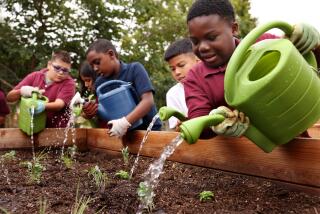Students want climate change lessons. Schools aren’t ready
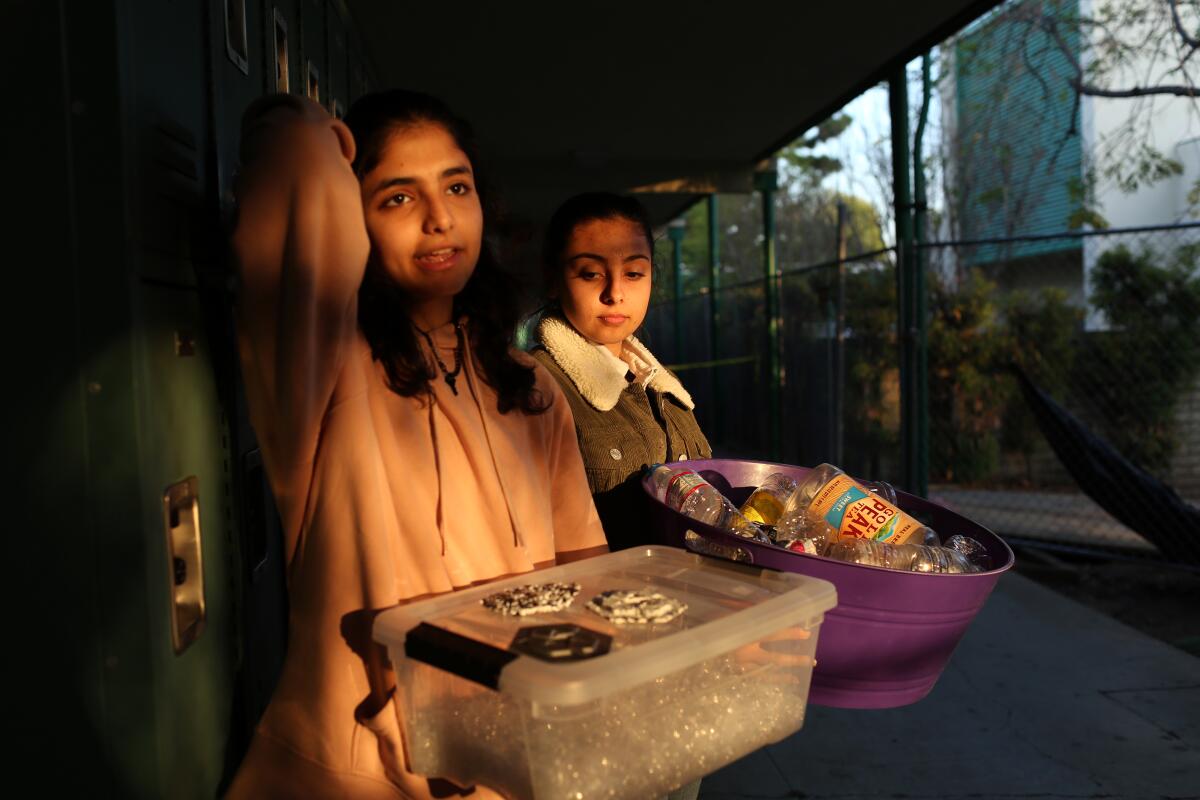
- Share via
Not too long ago Coral Ben-Aharon, a 15-year-old sophomore at Granada Hills Charter High School, didn’t bother to use her school’s recycling bins — and didn’t know how plastic waste contributes to greenhouse gas emissions.
But then her friend Sarah Ali convinced Coral to join the science team. Now the two are trying to invent a creative way to recycle waste on campus by melting discarded plastic and making a bench with solar panels, where students would be able to charge their school-issued Chromebooks.
For the record:
5:10 p.m. Dec. 30, 2019An earlier version of this story incorrectly identified the Lemelson-MIT Program.
Their project exemplifies how California’s science standards are taking hold in classrooms as educators seek to follow curriculum guidelines that call for more relevant, hands-on lessons and stronger instruction on climate change and the environment.
However, widespread science teacher shortages and the lack of training among many current teachers on climate change threatens the goals of the curriculum that aims in part to prepare students to be environmental problem-solvers as they enter adulthood. It also hinders an opportunity for educators to capture a newfound passion among those teenagers who are eager to engage in a growing youth climate activist movement, science educators say.
In 2016-17, about half of incoming California math and science teachers entered classrooms without full credentials, according to an analysis from the Learning Policy Institute.
To help address this gap, the University of California and California State University systems, which prepare 56% of the state’s pre-K through high school teachers, has launched a “Climate Change Literacy Project,” an initiative aimed at teaching teachers more about the topic and teaming them up with scientists to help.
A statewide summit this month drew about 200 educators and academics to UCLA, and a slate of the state’s top educator leaders were on hand to explain what is being done at the university level to train teachers.
Politics in the science classroom
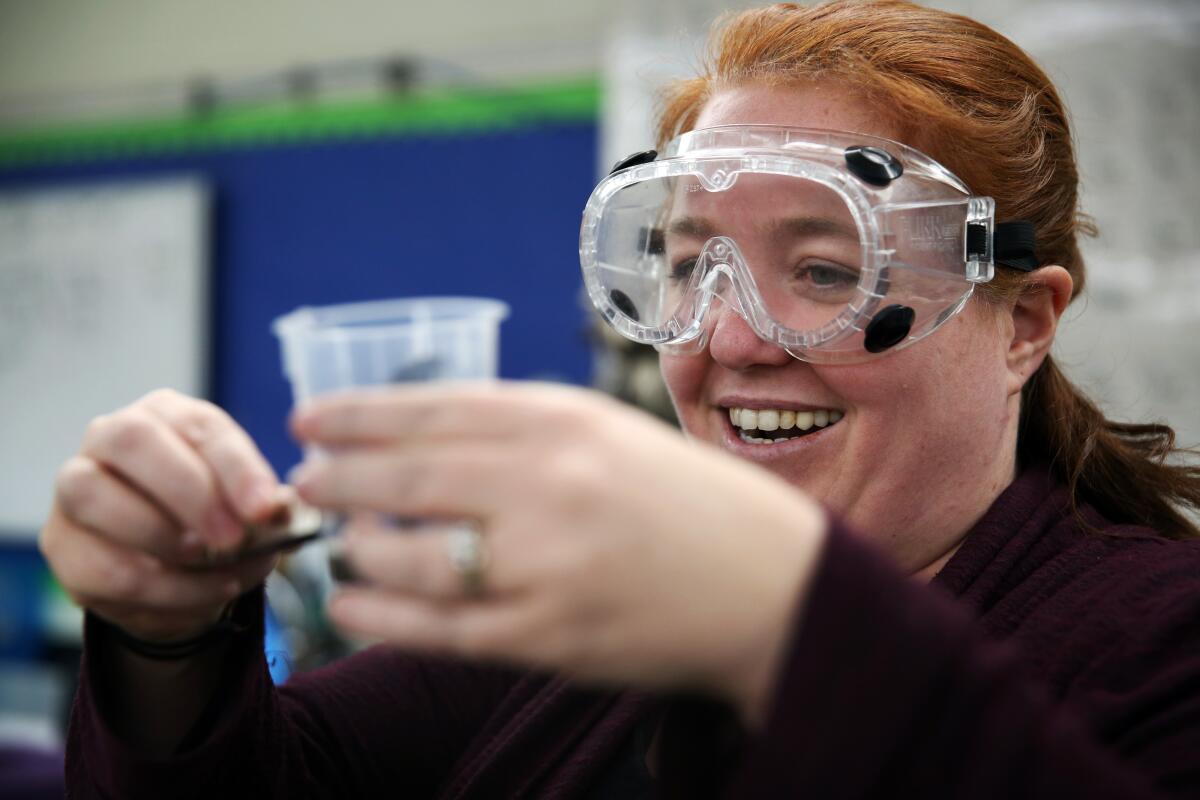
CSU Chancellor Timothy White said the 23-campus system is “integrating climate and [environmental] sustainability courses across all of our academic disciplines” to help teachers enrolled in credentialing courses and other students.
Granada Hills chemistry teacher Jeanette Chipps, the science team advisor for Coral and Sarah, attended the symposium and knows firsthand about the challenges of fueling inquisitive minds.
Students enter her class often knowing about climate change as a big-picture topic, Chipps said. But they don’t know the science or history behind it.
“They hear these things and, like, they want to know why, they want to better understand it and they want to do something about it,” Chipps said. “It’s just about finding and then giving them the tools to do something about it.”
The conference offered teachers such as Chipps a day to exchange ideas that meet the new standards.
How is it done?
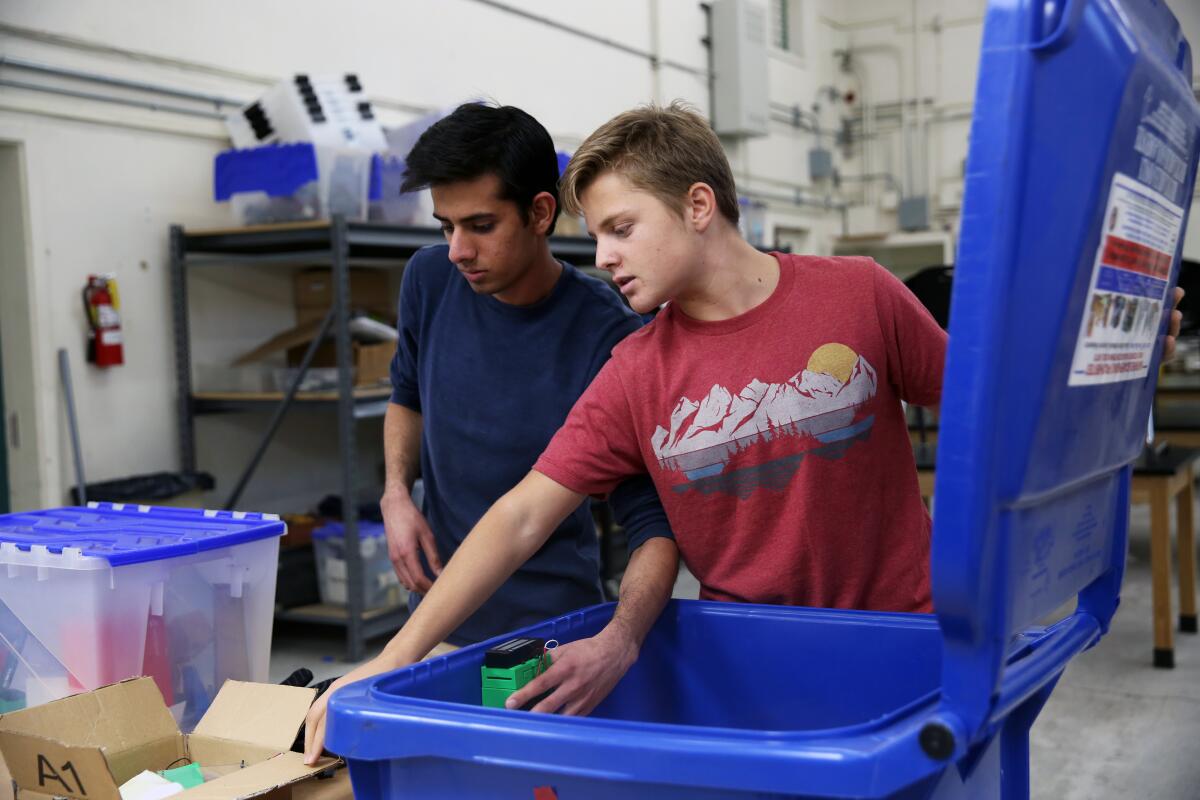
At Vista Magnet Middle School in northern San Diego County, eighth-grade science teacher Stephanie Sanchez explained that she partners with a climate scientist to create lesson plans for her students based on the local impacts of climate change, she told a group of about five at her table at the UCLA summit. The unit focuses on the science of why Arctic ice is melting, and Sanchez allows students to drive the discussion with their questions about what leads to these impacts, an element in the science standards.
The students then come up with local solutions that they must present to either their school board, the city council or the city’s climate action committee.
“We couldn’t just say, it’s all doom and gloom and we’re killing the world and everything’s going extinct,” she said. “We did have to give them that agency.”
In the Rialto Unified School District, leaders revamped the high school science course pathway altogether. Instead of two years of required science classes to graduate, the base for entry to CSU or UC, the district requires three years. Courses are not simply split into traditional biology or chemistry classes. Instead, new UC- and CSU-approved courses take in these subjects by examining science-related issues.
Many Rialto high school students were not passing chemistry requisite classes, blocking their access to other classes and increasing their science achievement gap, said Juanita Chan, the district’s STEM and college career pathways coordinator.
“So we started thinking about project-based learning and how we could create courses that ... aligned themselves with future career goals,” she said.
One class, for example, is about solving water problems. Students learn about water as it relates to chemistry, biology and engineering. The students learned how the new local flood detention basin was created, for example, and read parts of the environmental impact report.
Some teachers and counselors have been resistant to such new ways of teaching, and the district has had to invest heavily in professional development and in getting staff to buy in, Chan said.
At Granada Hills Charter, Coral is learning about plastic waste and water in multiple 10th-grade classes — in chemistry she learned about how salt and plastic bond. In social studies, she had to create a website on the history of water use in the U.S.
In a combined English-science assignment, she and other students had to use recycled materials to create a piece of artwork that represents their “inner demon.” Some chose anxiety, others illustrated toxic relationships with fragments of plastic they had collected from a chemistry class field trip to the L.A. River.
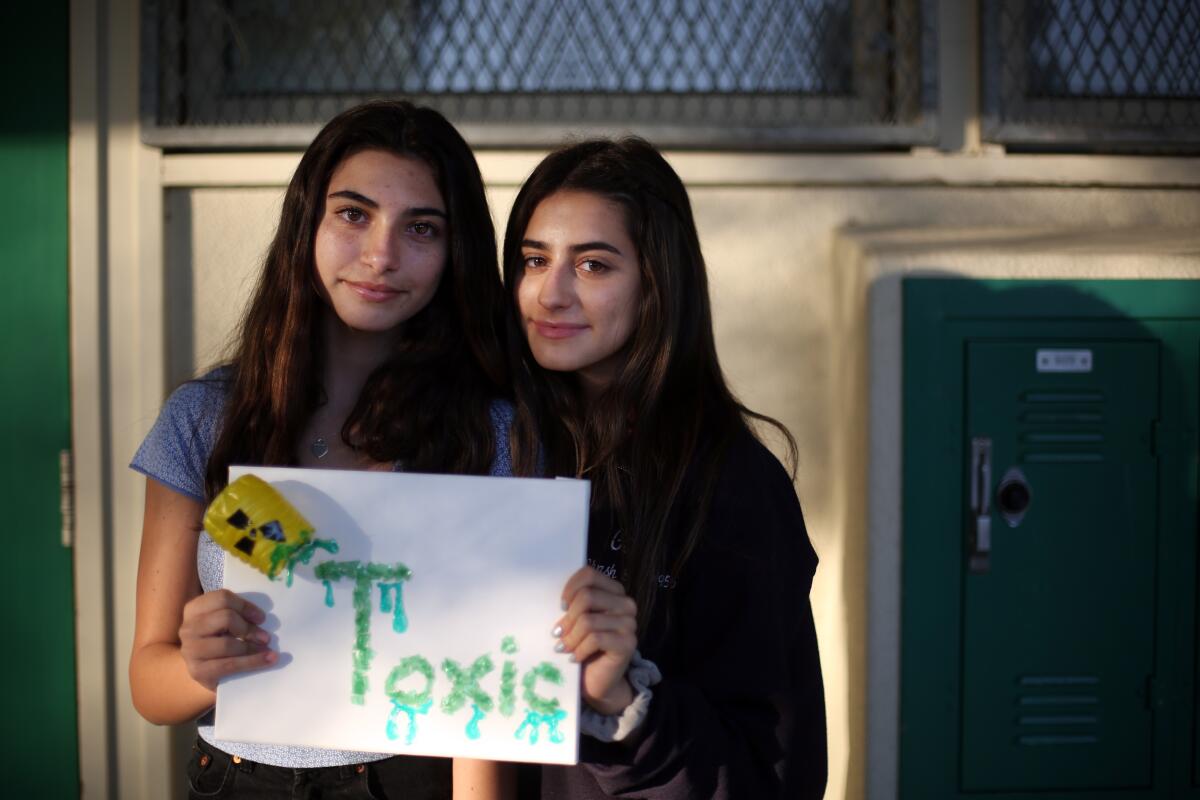
The science standards are meant to increase students’ ability to question what happens around them and identify patterns in the natural world, because research suggests that students learn better when they practice science rather than learn about it from a textbook, said Bill Sandoval, a UCLA education professor who studies how children learn science.
“We want children to learn science concepts through investigating phenomena in the world,” Sandoval said.
The relevance of this kind of interdisciplinary science learning is taking off on her campus, Chipps said. A science team of dozens of students stays after school to put some of its newfound learning into practice, addressing challenges that affect their lives.
The Granada Hills campus, for example, pulls in students from San Fernando Valley areas that are heavily affected by strong wind patterns and fires that experts say will become more destructive as climate change continues. One team of students — bolstered by a $10,000 grant from the Lemelson-MIT Program — is trying to invent a mechanism that will automatically lock a trash can when it tips beyond a certain point.
That project came about because teens noticed that in Porter Ranch, wind often overturns trash cans on the streets, creating a mess that can pollute water streams.
Application of these new hands-on approaches and climate change lessons is inconsistent, though. Teachers struggle to find both the class time and the confidence to teach a topic in which they don’t have expertise. It also requires training to shift from telling students what they need to know to showing them how to work as young scientists.
“Most science teachers haven’t done scientific research themselves ... so one thing you’ve got to do is give them experience” through professional development opportunities, Sandoval said.
Chipps has an advantage that most science teachers do not — she was a scientist herself, a neuroscience PhD candidate before she discovered teaching was her greater passion, but that she could bring the sense of inquiry she had as a researcher into the classroom. Students still ask her plenty of questions about climate change for which she doesn’t have the answers, Chipps said.
“Let’s go tackle it together is how I’ve been approaching it,” she said.
More to Read
Sign up for Essential California
The most important California stories and recommendations in your inbox every morning.
You may occasionally receive promotional content from the Los Angeles Times.


